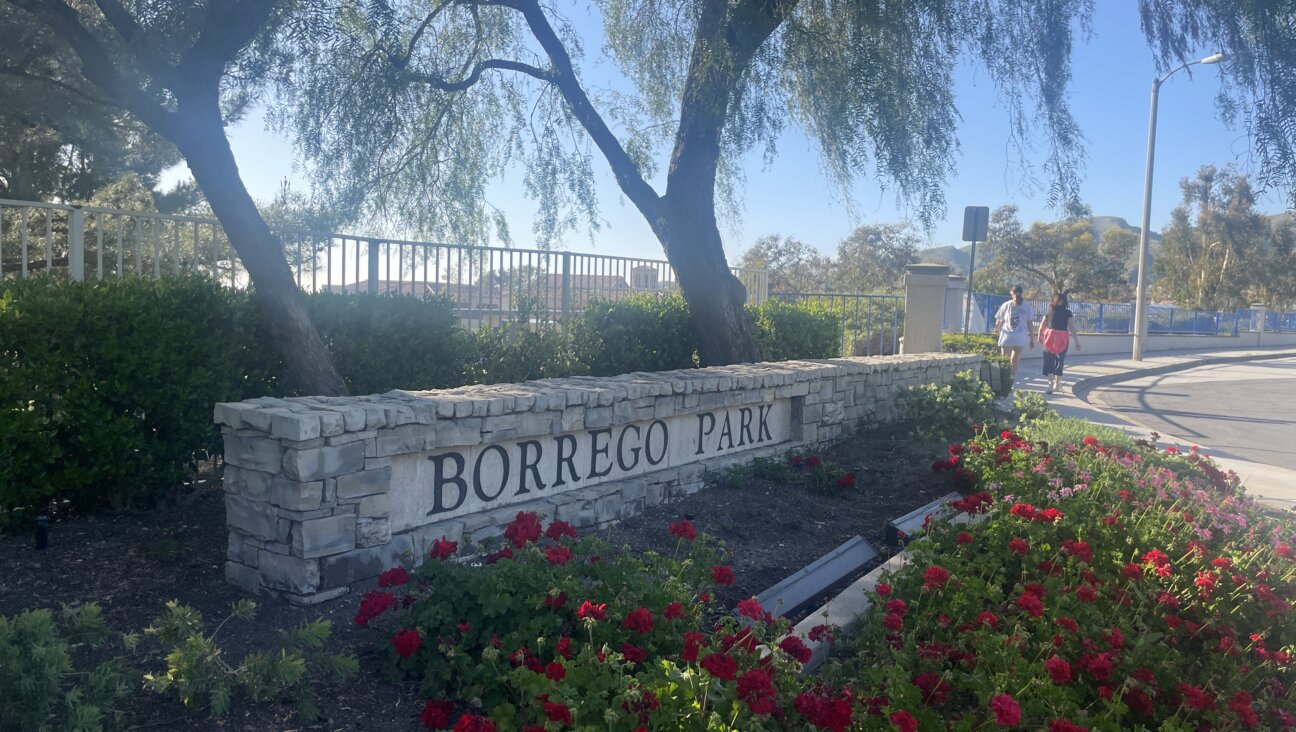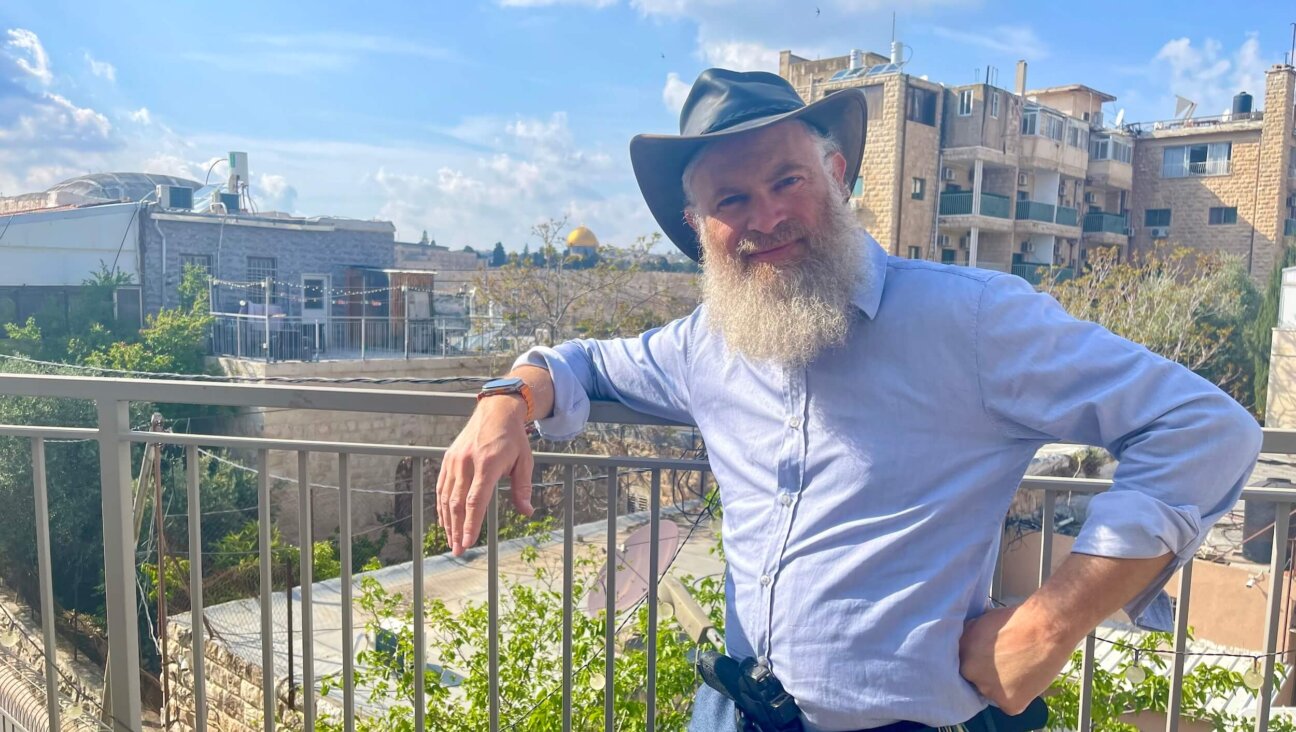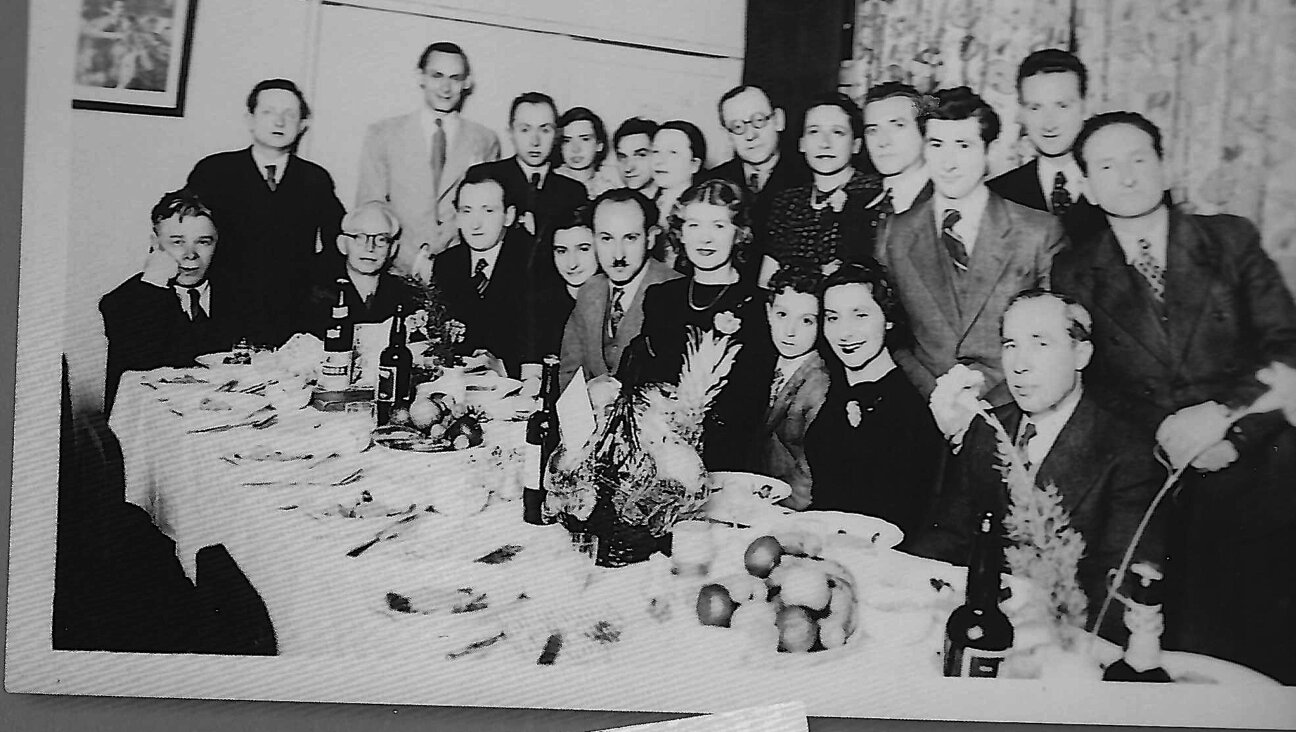Ketubah Artist to the People
When Tsilli Pines was planning to wed in 2005 and couldn’t find a ketubah (the official Jewish marriage document), that reflected her own taste, she rolled up her sleeves and made one herself.
The Portland, Ore.-based graphic designer, who has lent creative juices to the online presences of David Bowie and Robert Mondavi Wines, had long dreamed of creating her own collection of modern art, but she didn’t want to become just another name in an over-saturated market.
“There were a lot of talented designers making objects in the spirit of modern design, and I felt like I had nothing to add,” she said. “I found the opportunity in ketubot.”
Pines was so happy with the result of her custom ketubah — a vertical layout with two Craspedia flowers in silhouette — that soon she began crafting modern marriage contracts for friends. She enlisted her native Hebrew-speaking mother, whose thick Israeli accent she likes to playfully imitate, to assist with wording and translation. In 2006 she started selling them, “in small batches at first, to learn the craft,” and in 2008 she launched a website, allowing brides and grooms around the world access to her brand, New Ketubah.
Pines aimed to fill a stylistic void in an industry best known for loopy calligraphy and illuminated manuscripts, while maintaining an eye toward cost. Like any piece of art, a custom ketubah can be a timely and expensive proposition, costing upward of $1,000. Pines makes her pieces more affordable — they range from $395 to $595, plus shipping — by drafting a few images that can be modified with slight tailoring. She hand-stitches patterns into each paper so that no two ketubot are exactly alike.
Pines also conjures the DIY spirit and the tradition of tikkun olam by providing a free downloadable ketubah pattern on her website for couples who want to try making one themselves. And she doles out facts (parents’ names in Hebrew) and advice (no rabbi or Hebrew-speaking ima handy? Google Translate works fine).
New Ketubah features whimsical templates: Polaroids of stars, yin and yang shapes, sketches of planets and tree roots, pinwheel-like flowers and stacked rays of sun. The color schemes are muted and minimal, but the drawings have a delicate heft. The art deco inspired Sunburst ketubah, for example, is a radiant yet simple half-moon of geometric lines — both inked and sewn — in mostly yellow, orange and gray.
Pines will tell you that a characteristic asymmetry runs through her ketubot, and perhaps it evokes her own nontraditional journey: Her family moved to Berkeley, Calif., from Israel when she was 6 years old. It was an adjustment.
“I didn’t speak English at all. It was a bit traumatic to start school and be so disoriented, not understanding what anyone was saying,” she said.
Ketubot proved so fulfilling for Pines that she was inspired to make a second foray into Jewish design, in the form of children’s wall art. Pines created a contemporary Hebrew alphabet under the brand Alef Betty, which launched in April and pacified a nagging childhood memory.
She vividly recalls the smooth shapes and cartoonish style of a set of Hebrew-alphabet posters from Israel that hung in the bedrooms of both her and her brother. Each letter corresponded to an image: A for artist, or T for tall. But as Pines would understand later, when she revisited the posters, the text presented concepts too mature for young children, like L for loneliness, and I for illness. After a childhood spent chewing over the posters, Pines was afforded from Alef Betty an outlet to simplify the concept — she created a set of three prints in soy-based ink that come in a soft tomato red or a cooler, more traditionally Jewish blue — and to focus on her love of type.
In fact, Pines gets quite excited about type, the “basis for how people communicate.” She is an admirer of renowned Israeli typographic artist Oded Ezer. Lawrence Kushner’s definitive guide to Hebrew calligraphy, “The Book of Letters” (Jewish Lights Publishing, 1990), is a work she recommends for an introduction to the depth and breadth of contemporary Hebrew type. She is concerned about the anglicization of Hebrew typography — the shapes of Hebrew letters, the spaces in them and their placement are becoming more heavily influenced by the languages to which Hebrew commonly appears next, namely English. With these concerns in mind, Pines looked to Israeli type design cooperative Hagilda, for its unique reinventions of traditional Hebrew typefaces to use in her prints.
“You could spend your whole life learning about the alphabet and the various expressions of these 22 letters,” she said. “The typography is a reflection of what’s happening in Israel at large. So many influences affecting the output.”
While Pines’s love of Israel and family is the very foundation of her profession, her prints and ketubot represent a new Judaica that celebrates her heritage and love of storytelling.
Contact Allison Gaudet Yarrow at [email protected]

I hope you appreciated this article. Before you go, I’d like to ask you to please support the Forward’s award-winning journalism this Passover.
In this age of misinformation, our work is needed like never before. We report on the news that matters most to American Jews, driven by truth, not ideology.
At a time when newsrooms are closing or cutting back, the Forward has removed its paywall. That means for the first time in our 126-year history, Forward journalism is free to everyone, everywhere. With an ongoing war, rising antisemitism, and a flood of disinformation that may affect the upcoming election, we believe that free and open access to Jewish journalism is imperative.
Readers like you make it all possible. Right now, we’re in the middle of our Passover Pledge Drive and we need 500 people to step up and make a gift to sustain our trustworthy, independent journalism.
Make a gift of any size and become a Forward member today. You’ll support our mission to tell the American Jewish story fully and fairly.
— Rachel Fishman Feddersen, Publisher and CEO
Join our mission to tell the Jewish story fully and fairly.
Our Goal: 500 gifts during our Passover Pledge Drive!
























